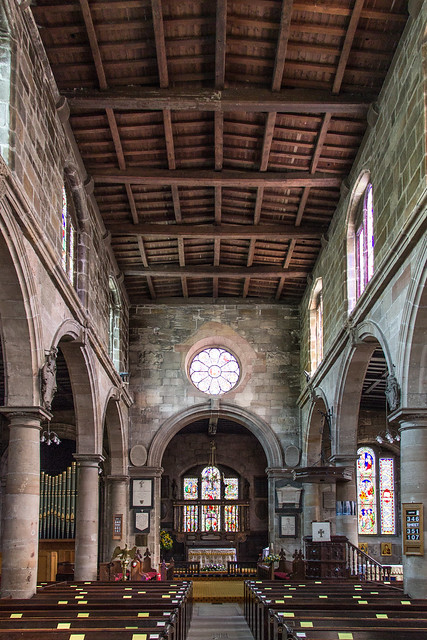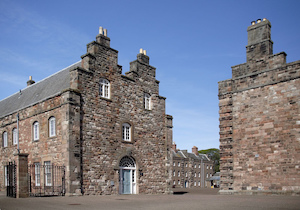Church of the Holy Trinity, Berwick-upon-Tweed, England

-
Description
Grade I listed historic building. "The Church of the Holy Trinity, Berwick-on-Tweed is a Church of England parish church in the centre of Berwick-upon-Tweed, Northumberland. It is a rare example of a church built in the Commonwealth era. In 1641, King Charles I gave money to replace the dilapidated old church in Berwick. In the following year, however, the Civil War began. Despite this, more money was collected and stone for building the church was taken from the old Berwick Castle. In 1650 John Young of Blackfriars, a London mason, was contracted to build the new church, and by 1652 the church was complete. This makes it one of the very few churches to have been built during the Commonwealth of England; other examples include Ninekirks, Holy Trinity, Staunton Harold and St Matthias Old Church in Poplar, London. The design of the church is based on that of St Katharine Cree in London. It has a side aisle on each side of the nave, and the arcades are of the Tuscan order. The church was built with no chancel, altar, organ, tower or bells. However the church interior was surrounded by galleries on all four walls. In 1660, two years after the Restoration of the Monarchy, John Cosin, Bishop of Durham, consecrated the church. He demanded that a chancel should be built at the east end to accommodate a communion table. However, this was not done until 1855 when the present chancel was built and many original Gothic windows were redesigned in the Classical style. The 1855 west window is particularly fine and includes 16th- and 17th-century Flemish roundels formerly in the private chapel of the Duke of Buckingham at Canons Park, Middlesex. Berwick-upon-Tweed (/ˌbɛrɪk-/; Scots: Sooth Berwick, Scottish Gaelic: Bearaig a Deas) is a town in the county of Northumberland. It is the northernmost town in England, at the mouth of the River Tweed on the east coast, 2 1⁄2 miles (4 kilometres) south of the Scottish border (the hamlet of Marshall Meadows is the actual northernmost settlement). Berwick is approximately 56 mi (90 km) east-south east of Edinburgh, 65 mi (105 km) north of Newcastle upon Tyne and 345 mi (555 km) north of London. The 2011 United Kingdom census recorded Berwick's population as 12,043. A civil parish and town council were created in 2008 comprising the communities of Berwick, Spittal and Tweedmouth. Berwick was founded as an Anglo-Saxon settlement during the time of the Kingdom of Northumbria, which was annexed by England in the 10th century. The area was for more than 400 years central to historic border wars between the Kingdoms of England and Scotland, and several times possession of Berwick changed hands between the two kingdoms. The last time it changed hands was when Richard of Gloucester retook it for England in 1482. To this day many Berwickers feel a close affinity to Scotland. Berwick remains a traditional market town and also has some notable architectural features, in particular its medieval town walls, its Georgian Town Hall, its Elizabethan ramparts, and Britain's earliest barracks buildings, which Nicholas Hawksmoor built (1717–21) for the Board of Ordnance." - info from Wikipedia. Summer 2019 I did a solo cycling tour across Europe through 12 countries over the course of 3 months. I began my adventure in Edinburgh, Scotland and finished in Florence, Italy cycling 8,816 km. During my trip I took 47,000 photos. Now on https://www.instagram.com/billyd.wilson/" rel="noreferrer nofollow">Instagram. Become a patron to my photography on https://www.patreon.com/billywilson" rel="noreferrer nofollow">Patreon. -
Owner
Billy Wilson Photography -
Source
Flickr (Flickr) -
License
What does this mean? Attribution-NonCommercial License
-
Further information
Link: https://www.flickr.com/photos/32132568@N06/50010546816/
Resource type: Image
Added by: Pat Thomson
Last modified: 5 years, 3 months ago
Viewed: 605 times
Picture Taken: 2019-05-17T09:48:36 -
Co-Curate tags










